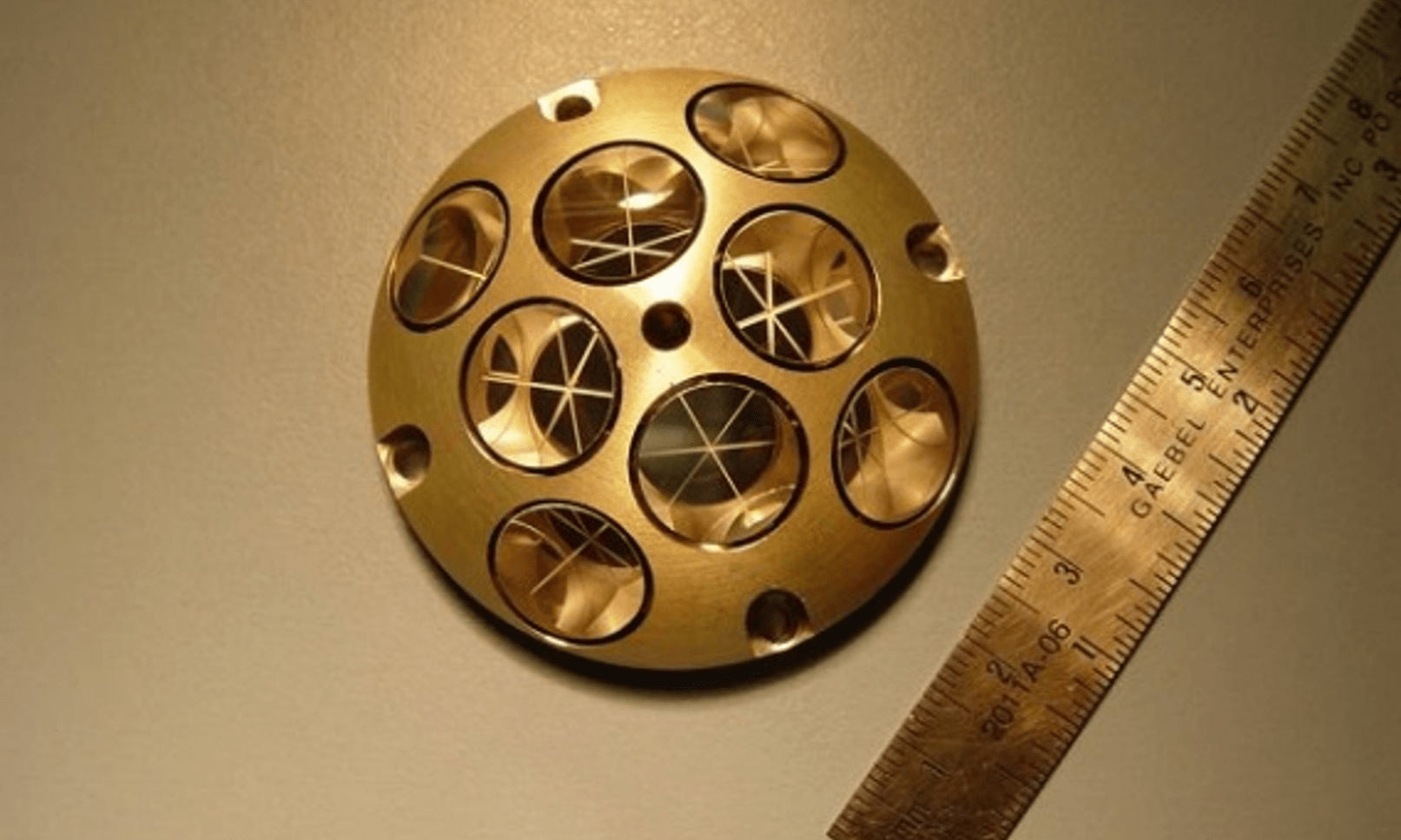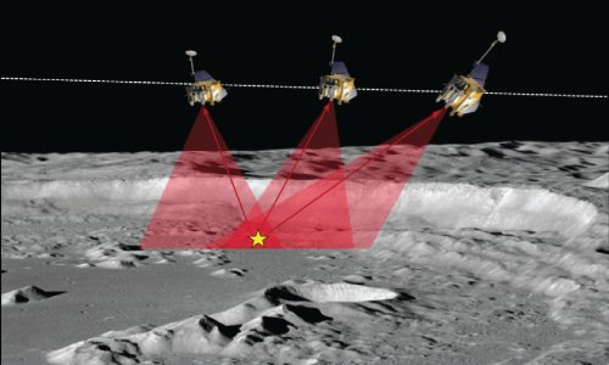
PRIME-1 Science Payloads
Intuitive Machines' Nova-C lander will deliver three NASA CLPS science payloads to Shackleton Connecting Ridge (South Pole).
Polar Resources Ice Mining Experiment-1 (PRIME-1)
- Summary: PRIME-1 is collection of two instruments – the TRIDENT drill will extract lunar soil (regolith) up to 1-meter below the surface (approximately 3 feet), and MSolo, a mass spectrometer designed to analyze the composition of that sample for water and other components. Samples from multiple depths will be analyzed. In addition, it will measure the composition of gases emanating near the drill activity. This will help scientists understand resources on the Moon (referred to as ‘in situ resources’) in preparation for both the VIPER mission and the planned ARTEMIS missions to send humans to the Moon.
- Instruments Included: The Regolith and Ice Drill for Exploring New Terrains (TRIDENT) Drill; Mass Spectrometer Observing Lunar Operations (MSolo)
- Type of Instruments: Drill and Mass Spectrometer
- Key Measurements: Surface and subsurface volatiles
- Task Order: CLPS TO PRIME-1
- Lead Development Organization: KSC
- Payload PI: Dr. Jackie Quinn
The Regolith and Ice Drill for Exploring New Terrain (TRIDENT)

The Regolith and Ice Drill for Exploring New Terrains (TRIDENT) will collect lunar surface samples that are about 10 cm long to be analyzed by other VIPER instruments.
NASA/Honeybee Electronics
- Summary: Excavates lunar regolith and subsurface material to 1-meter deep (3.3 feet) and measures forces, displacements, and temperatures for regolith bulk properties. This brings samples to the surface where other VIPER instruments (NIRVSS and MSolo) can inspect them for the presence of water and other volatiles. Most samples will be about 10 cm in length giving ten samples across the entire 1-meter drill hole. We were able to use a drill like this on Apollo 15, and this will help us maintain longer missions in the future. TRIDENT is a rotary percussive drill, but unlike its ancestor, it does not need humans to operate it. It weighs 16 kg (35 pounds) and should be capable of digging a hole 1-meter deep (3.3 feet) in 10 cm (4-inch) bites. This approach allows for a more accurate determination of how deep substances of interest can be found in the soil. The drill bit at the tip has carbide cutting teeth. These are harder than steel to maintain their sharpness, and strong enough to drill into basalt if needed.
- Type of Instrument: 1-meter Hammer drill
- Key Measurement: Excavation of sub-surface material; measuring forces, displacements, and temperatures for regolith bulk properties (e.g., subsurface temperature vs. depth; strength of regolith vs. depth)
- Task Order: CLPS TO PRIME-1
- Lead Development Organization: Honeybee Robotics
- Payload PI: Dr. Kris Zacny (Honeybee)
Note: See also TO20A-VIPER
Mass Spectrometer Observing Lunar Operations (MSolo)

MSolo is a commercial off-the-shelf mass spectrometer modified to work in space and it will help analyze the chemical makeup of landing sites on the Moon, as well as study water on the lunar surface.
NASA/Kim Shiflett
- Summary: Prospects for surface volatiles during drilling. MSolo will identify very light weight volatiles, i.e., things that evaporate quickly, like water.
- Type of Instrument: Quadrupole mass spectrometer
- Key Measurement: Composition of the Moon – especially looking for water
- Task Order: CLPS TO PRIME-1
- Lead Development Organization: KSC, INFICON
- Payload PI: Dr. Janine Captain, Dr. Jackie Quinn
Note: See also TO2-AB and TO20A
Laser Retroreflector (LRA)

This generated image shows how the LRA will be located on the surface of the Moon so orbiting spacecraft can retroreflect to find a precise distance.
NASA / GSFC

This diagram shows the concept of the lunar navigation satellite will work. The MAPS algorithms are shown in the black and white lined arrows while GPS signaling is shown in the squiggly red and black arrows.
NASA / MSFC
- Summary: A retroreflector bounces any light that shines on it directly backward (180 degrees from the incoming light). The LRA is a collection of eight of these, each a 1.25-cm diameter glass corner cube prism, all embedded in an aluminum hemisphere (painted gold as shown here) and is mounted to the lander deck. This design ensures that the LRA can retroreflect (i.e., bounce) laser light from other orbiting and landing spacecraft over a wide range of incoming directions and efficiently retroreflect the laser signal directly back at the originating spacecraft. This enables precision laser ranging, which is a measurement of the distance between the orbiting or landing spacecraft to the LRA on the lander. The LRA is a passive optical instrument and will function as a permanent fiducial (i.e., location) marker on the Moon for decades to come. (Note: this LRA design is too small for laser ranging from Earth).
- Type of Instrument: Passive optical device that reflects laser light directly backward (for laser ranging)
- Key Measurement: Precise distances
- Task Order: CLPS TO PRIME-1
- Lead Development Organization: NASA GSFC
- Payload PI: Dr. Xiaoli Sun
Note: See also TO2-AB, TO2-IM, and TO20A
Keep Exploring




